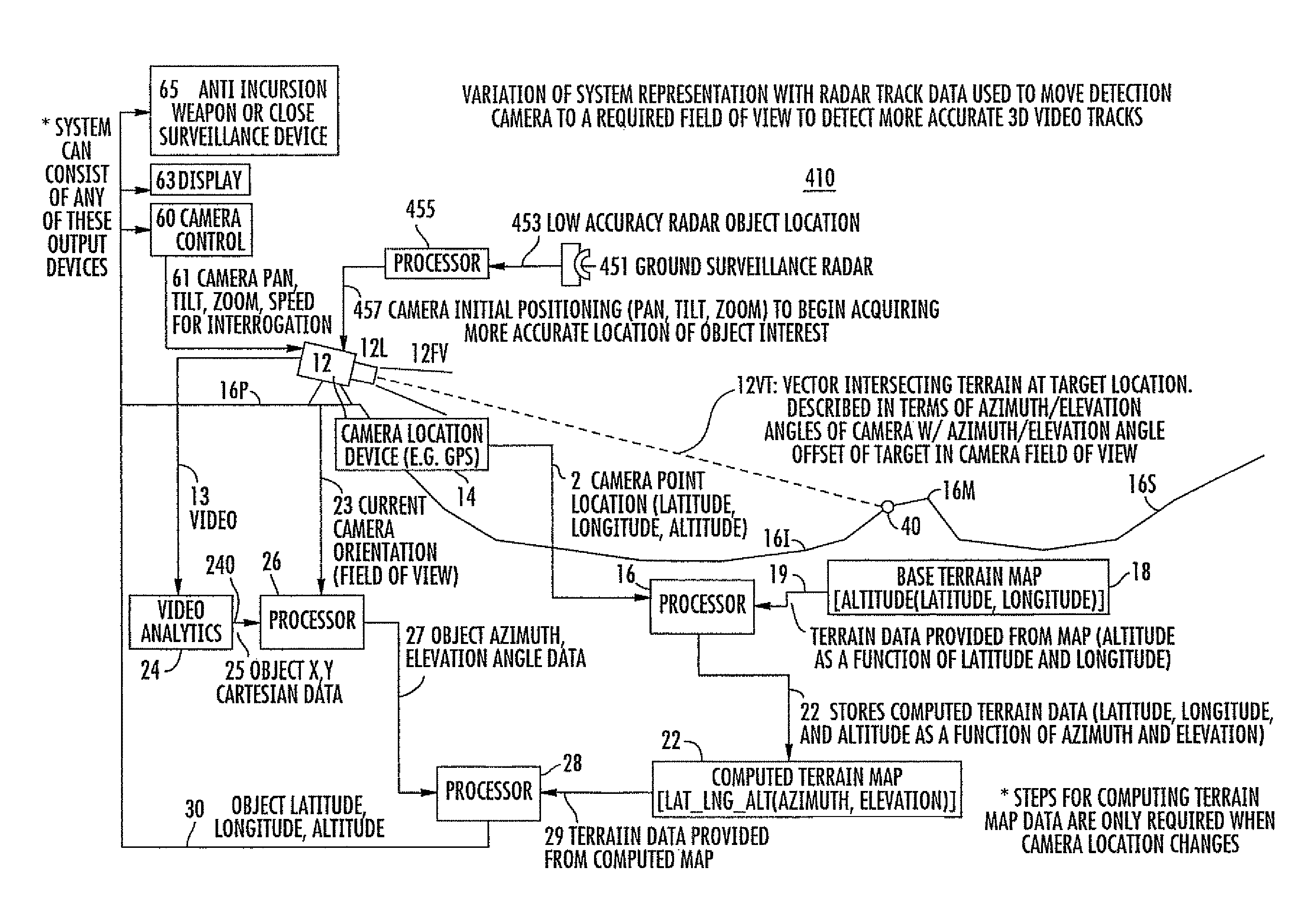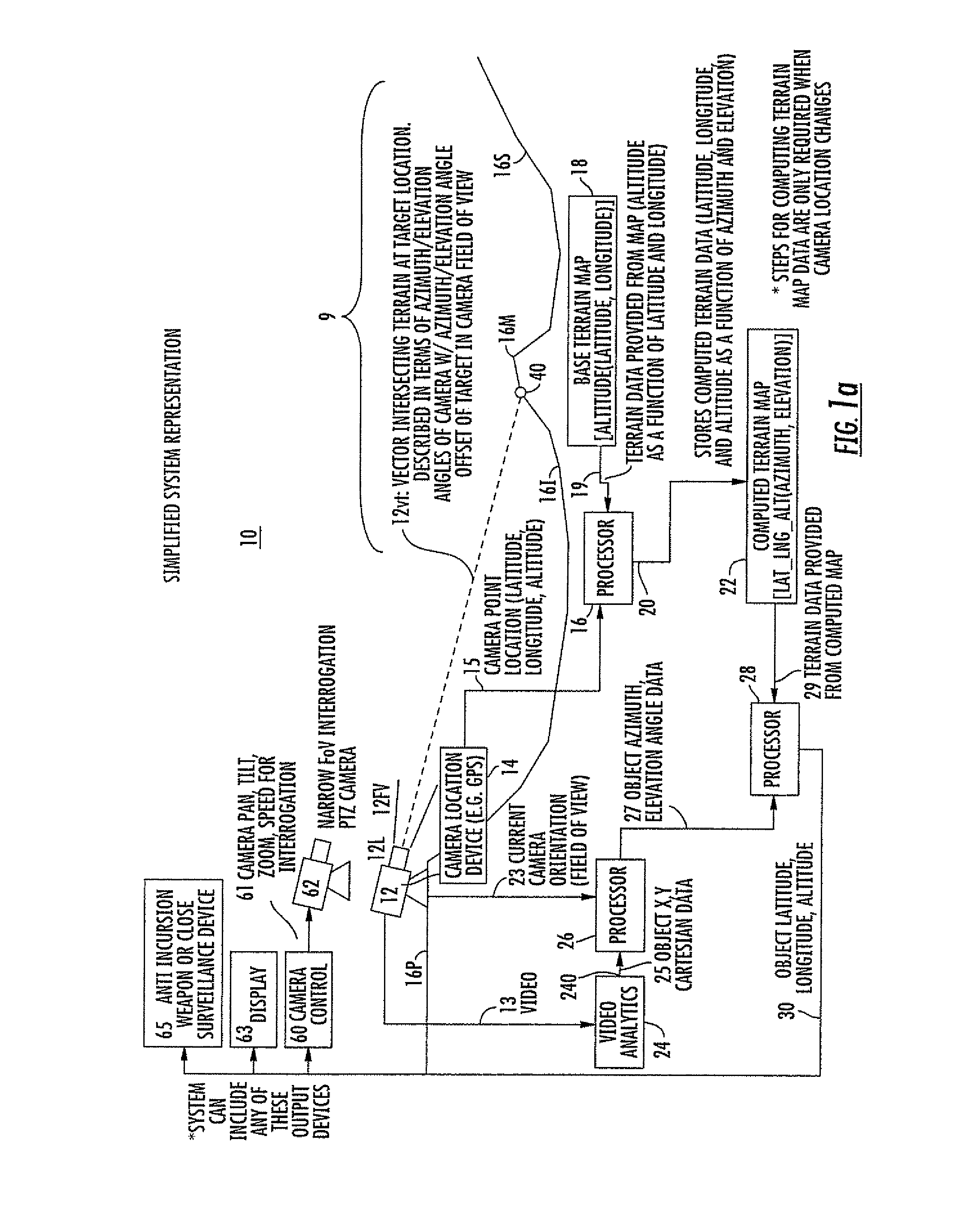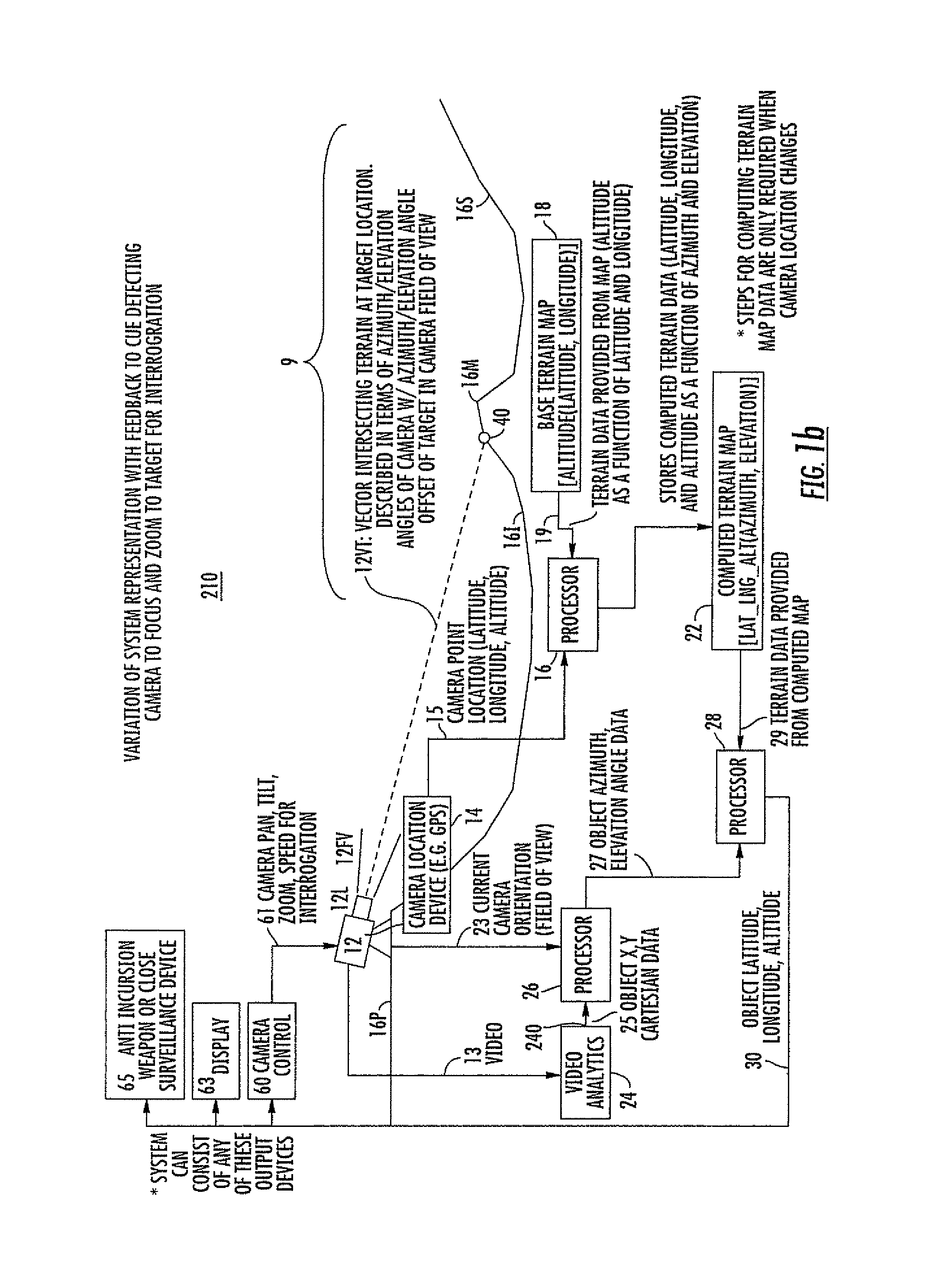Determination of the three-dimensional location of a target viewed by a camera
a three-dimensional location and camera technology, applied in the direction of navigation instruments, using reradiation, instruments, etc., can solve the problems of large surveillance area, small manpower available for surveillance, and inability to counter a detected incursion, so as to improve the accuracy of object location
- Summary
- Abstract
- Description
- Claims
- Application Information
AI Technical Summary
Benefits of technology
Problems solved by technology
Method used
Image
Examples
Embodiment Construction
[0018]FIG. 1a represents a system 10 according to an aspect of the invention. The system includes a camera 12 with a lens 12L mounted on a generally planar terrain region 16p. The camera 12 with lens 12 has an instantaneous field of view represented by lines 12fv, which are illustrated as being centered on a field-of-view axis 12vt (but do not necessarily have to be centered). The field of view 12fv encompasses a region of interest 9 which includes a mound 16m, a slope 16s, and an intermediate region 16i. Camera 12 is associated with a cameral location device 14, such as a global positioning system (GPS) receiver, which determines the camera location in terms of latitude, longitude, altitude, and heading, which aids in determining the camera pointing direction in terms of the field of view. The camera 12 location in terms of latitude, longitude, and altitude is transmitted from camera location device 14 by way of a path 15 to a processor illustrated as a block 16. Processor 16 also ...
PUM
 Login to View More
Login to View More Abstract
Description
Claims
Application Information
 Login to View More
Login to View More - R&D
- Intellectual Property
- Life Sciences
- Materials
- Tech Scout
- Unparalleled Data Quality
- Higher Quality Content
- 60% Fewer Hallucinations
Browse by: Latest US Patents, China's latest patents, Technical Efficacy Thesaurus, Application Domain, Technology Topic, Popular Technical Reports.
© 2025 PatSnap. All rights reserved.Legal|Privacy policy|Modern Slavery Act Transparency Statement|Sitemap|About US| Contact US: help@patsnap.com



